The star-nosed mole (Condylura cristata) is an animal that has amazed me since childhood, and not unlike the osprey of my last review, a species I always wanted a figure of. I am genuinely surprised it took this long for one to be produced. Maybe there have been others, I am not privy to every animal figure or toy produced throughout history, but today’s 2024 model by Takara Tomy A.R.T.S. is the only one I have ever seen!
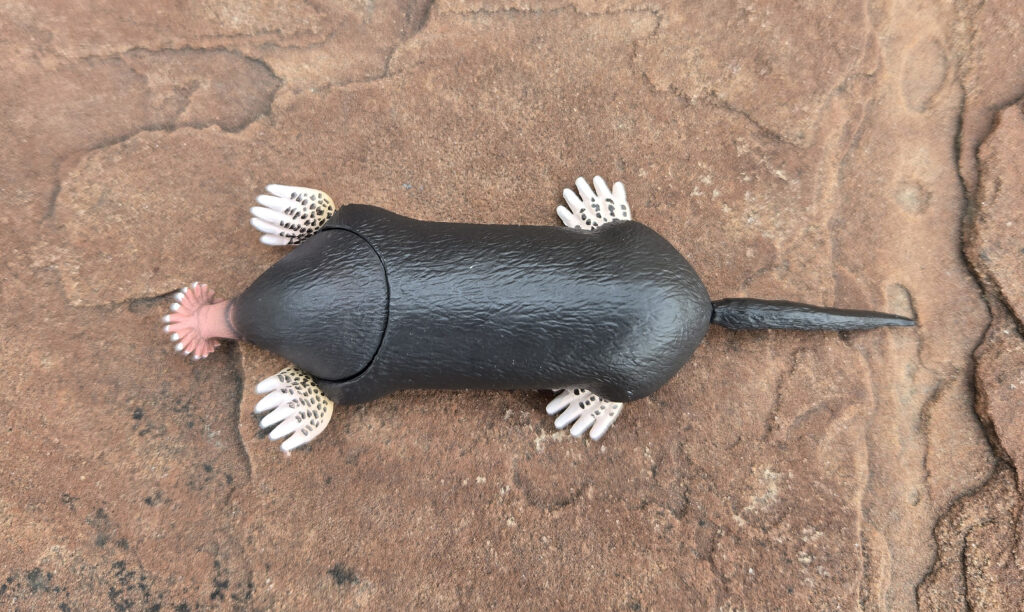
The star-nosed mole is endemic to eastern North America. Being a subterranean critter, it’s habitat is based on the presence of the appropriate soil type, as the mole prefers moist areas with poor drainage in coniferous and deciduous forests, clearings, wet meadows, marshes, and peatlands. It is also a good swimmer and can hunt for prey along the bottom of streams and ponds. It has a voracious appetite and when awake is constantly foraging for small invertebrates, including insects, terrestrial and freshwater worms, mollusks, and crustaceans. The mole is best known for the star-shaped tentacles on the end of its nose, each containing numerous Eimer’s organs, which accentuate the mole’s sensory abilities in response to its poor eyesight. A lot of research has been done on the physics of the mole’s nose, a discussion that is beyond the scope of this review, but essentially the tentacles in combination with the Eimer’s organs act as little ‘fingers’ helping the mole detect and evaluate potential prey.
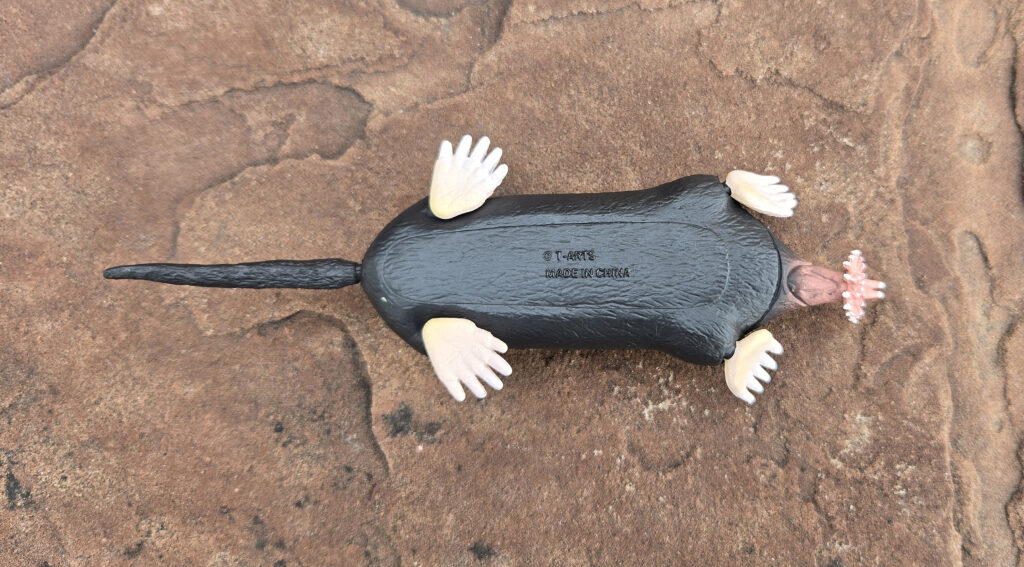
This Takara star-nosed mole has a total body length of 12.5 cm, including the tail. Minus the tail, the body is about 8.0 cm. Using either of those metrics, the figure scales at about 1:1.4-1:1.6, so slightly under 1:1. It’s noticeably larger than other moles in my collection (see below). I almost didn’t pursue it because of the size, but as I said earlier, it’s such a cool, iconic animal, it was worth it.
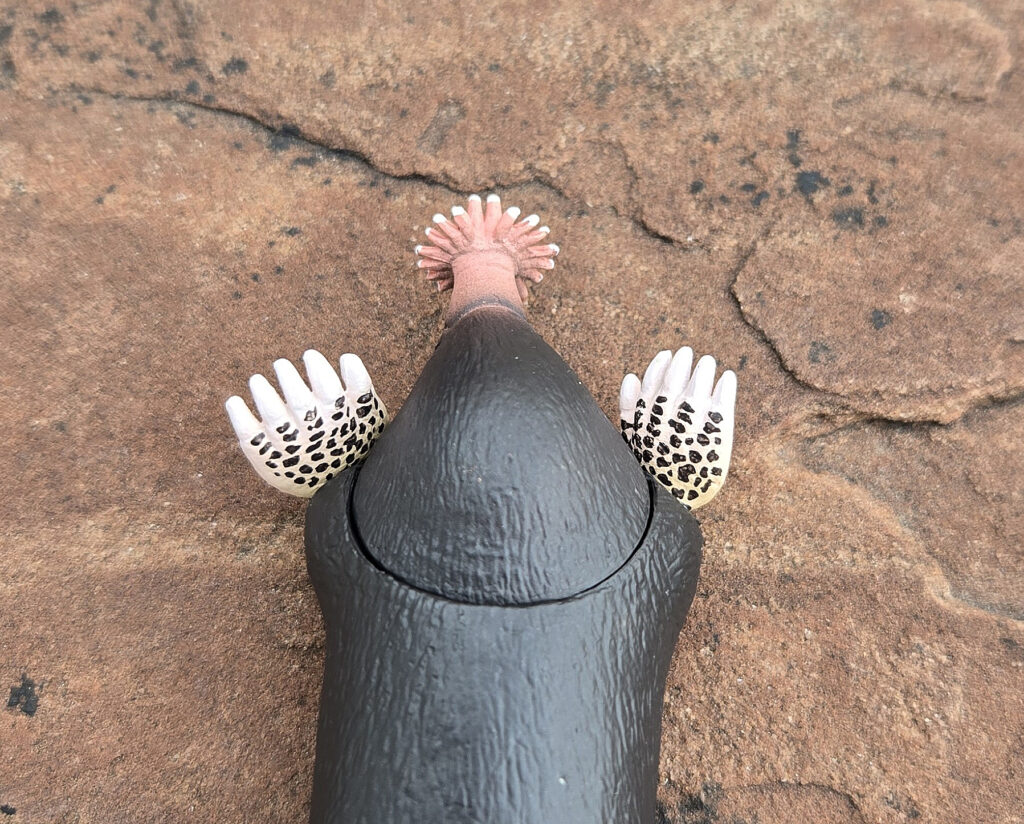
The mole is sculpted in a fairly static pose. I am not sure how much assembly is required. I only had to attach the tail, but it looks like the head may also be a separate piece (the dealer I bought it from photographed it for me before I committed to buying it, so he may have assembled more than just the tail). There are no articulations in the final product, however. The forelegs are up, as if it’s digging. The characteristic nose is very well sculpted; all 22 tentacles are represented (yes, I counted)!
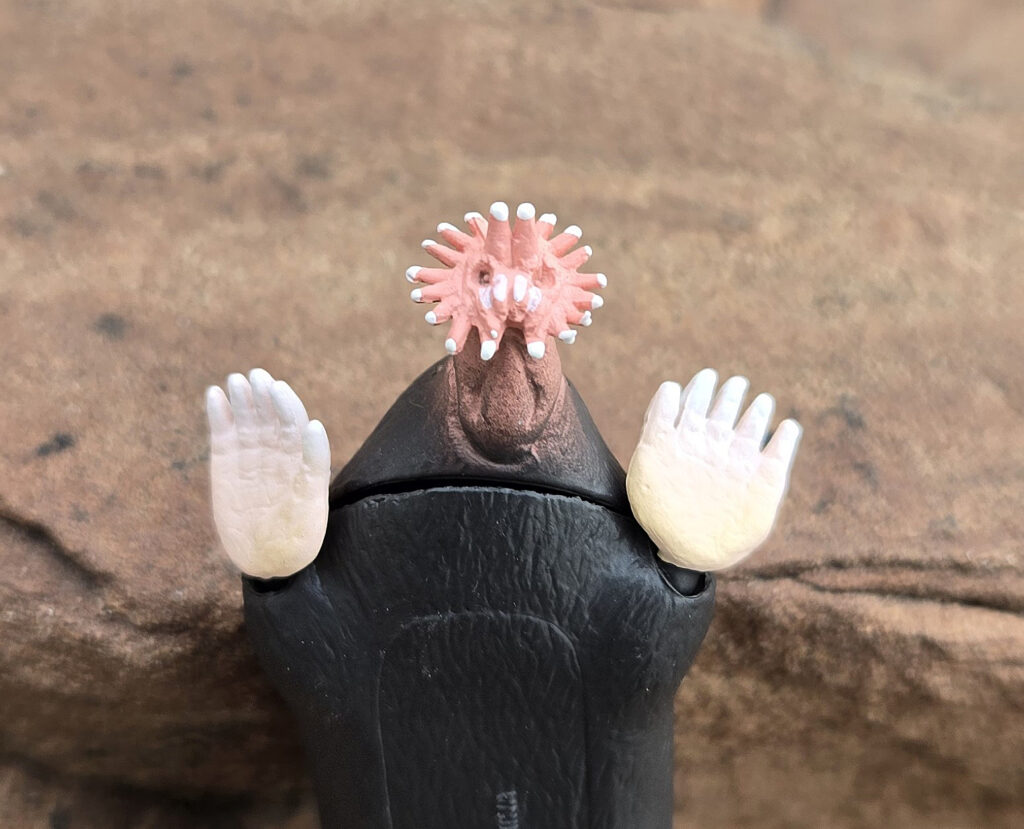
The color is simple but accurate. The main body and tail are a solid chocolate brown. The feet are paler with dark brown maculae dorsally and off-white claws. The snout and nose are pink, with pale tips on the nasal tentacles. The eyes are simply black dots near the base of the snout.
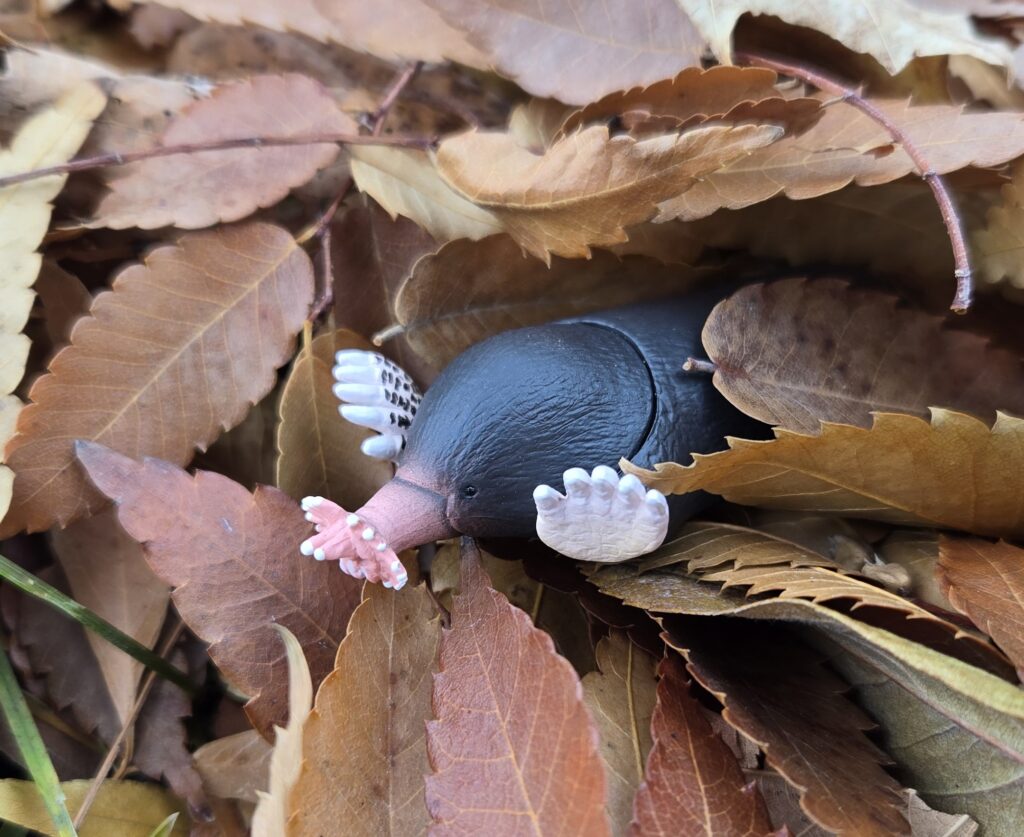
The Takara star-nosed mole comes recommended to collectors of interesting taxa. It’s size, assembly requirements, and availability in Japan may make it a challenge for some collectors, but I feel it’s worth the effort. As I mentioned earlier I almost didn’t pursue it because of the size, but now that I have it I am really glad that I did!
Here it is with other talpid moles in my collection, from left to right, Papo European mole (Talpa europea), Kaiyodo small Japanese mole (Mogera imaizumii), Kaiyodo Japanese mountain mole (Oreoscaptor mizura), Kaiyodo greater Japanese shrew mole (Urotrichus talpoides):
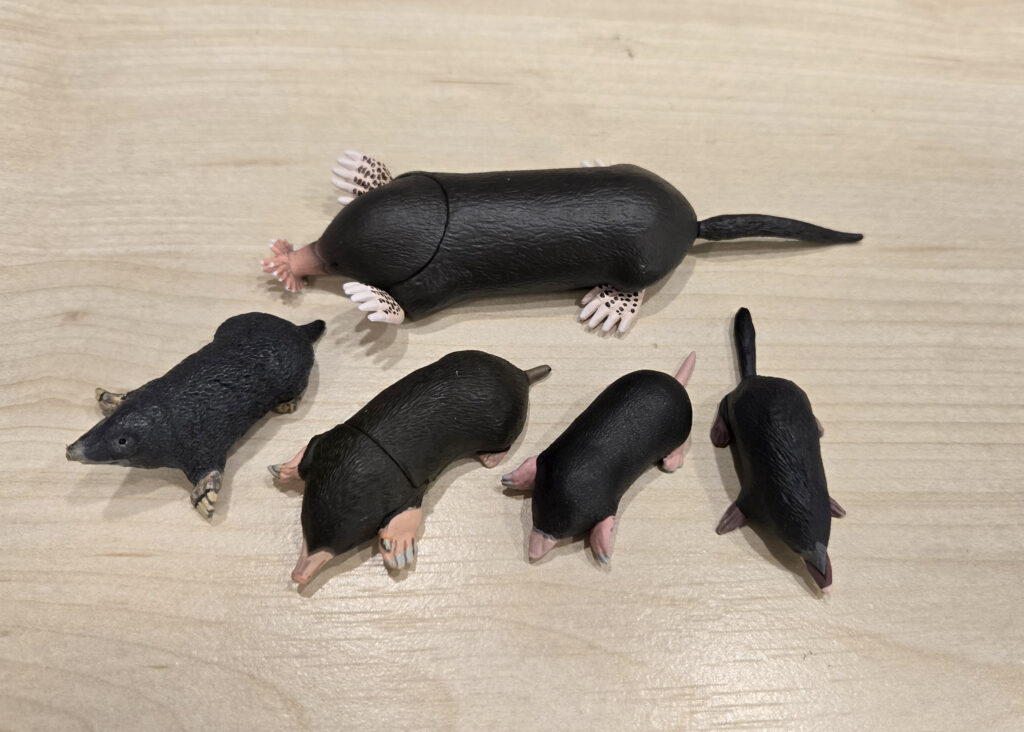
And here it is enjoying a nice, juicy Bullyland earthworm as a snack:
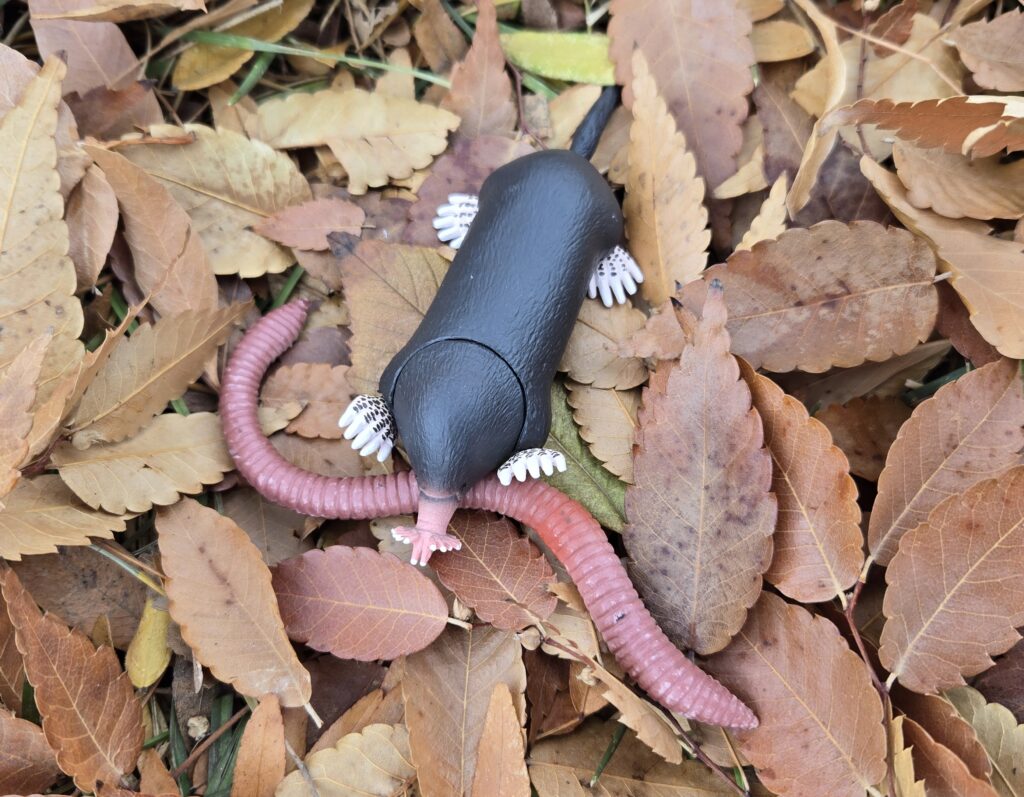
Disclaimer: links to Ebay and Amazon on the AnimalToyBlog are affiliate links, so we make a small commission if you use them. Thanks for supporting us!




I like this species too but I think I’ll wait for a better figure of one, it’s bound to happen eventually. Right?
When I was a kid I found a star-nosed mole that drowned in our swimming pool. I put it under a coffee can and waited for it to decompose. I still have its skull.
Years ago, there was a Bullyland mole of some kind that would have been closer in size to this Takara one. Probably a European as well, but definitely larger than that Papo.
Probably near impossible to find anymore.